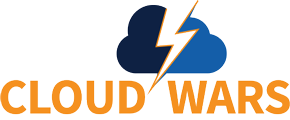Join your DSLUG community to kick off Community Summit with important new updates, new feature overviews and awards. Be the first to hear the Microsoft Dynamics SL product updates and road map delivered by Jeff Suwyn, Microsoft Dynamics SL Product Manager. Don’t miss this important session for all Conference attendees, focusing on the future direction of your User Group and your Dynamics SL product — and be ready for a great time along the way!
Search Results: HR (7862)
Configuring a Dynamics 365 Finance and Operations system requires settings on hundreds of forms. In this session, we look at how you can use data management to streamline the setup of a new system with spreadsheets. Once you have these spreadsheets, they can be used to guide you through the setup in an orderly fashion.
This type of configuration is not without challenges, including the format of the data, number of spreadsheets required, the order to run the sheets. Laura has been fully configuring systems since AX2012 with spreadsheets for 7 years and will walk you through the challenges and ways to overcome them.
Do you have multiple companies? Should you use copy company or some other methodology? Let’s look at the pros and cons of copy company vs. rerunning the same spreadsheets into the new company (ies).
Once you’ve configured you have to migrate data. Some of the challenges with data migration are similar but there are also unique challenges as well. Next we talk about the differences between configuration and data migration and how you use the data management framework differently for data migration. Customers and vendors have some real challenges to be able to load this data and then update it if addresses or other information changes. There are some techniques that can be used to guarantee updates are possible without having to look up record ids, party numbers, or address/location ids.
Learning Objectives:
•Understand the challenges with loading many data entities at once and ways to overcome those challenges
•Using Excel to help build the data to be loaded
•Knowing what to migrate from legacy systems and key data entities that will be required
•Steps to validate data
•What to do when you make a mistake and all that bad data is in your system
Audience: Functional and Technical staff responsible for configuring D365 Finance and Operations and loading data from other systems
Level: Intermediate
Prerequisite: Basic knowledge of data management framework required
Preparation: Please bring your own internet capable Windows PC to class for the hands on lab portion/class exercises.
See an end-to-end supply chain solution from NSM that uses a combination of CE, Power Apps andD365FO to provide mobility solutions for their customers. From ordering to distribution, the process seamlessly integrates every part of the key business functions. At NSM (National Seating and Mobility), the company honors its clients’ journeys toward independence, and helps them get where they deserve to go; at home, in their community, and throughout their lives. Let’s get moving.
The content of this session is geared toward an audience with beginner-level knowledge of the subject area.
This session will be available for CPE credits pending completion of session survey post event.
Get ready to explore the Dynamics GP Manufacturing modules!
This targeted hands-on training course provides an overview of the Dynamics GP Manufacturing Series followed by detailed instruction on the primary master data and transactions offered for manufacturing.
Instructor Sunny Mattoon will guide you through entering and maintaining Bills of Materials, tracking non-material cost by work center with Routings and best practices for the FIFO Periodic method (standard costing). You will learn how to process a Manufacturing Order from beginning to end – including component issue transactions, finished good receipts, how to work with lot/serialized items and how each transaction impacts the general ledger and inventory.
This class is essential for anyone who needs to utilize the essentials of GP Manufacturing.
Learning Objectives
Following completion of the course you will be able to:
•Describe how manufacturing integrates within GP
•Create and maintain Bills of Materials
•Create and maintain Routings
•Process Manufacturing Orders for in-house production
•Maintain FIFO Periodic (standard cost) items
Instructor: Sunny Mattoon, CPIM
Audience: Dynamics GP user, support or implementers
Level: Beginner to Intermediate
Prerequisites: Students should have a strong working knowledge of Microsoft Dynamics GP – Inventory
Preparation: Please bring an internet capable Windows PC to class for the Academy hands-on training environment.
Delivery Method: Group Live
Ever wonder what the folks in IT are doing when you ask them to pull data for you from Dynamics GP? Did you ever wish you could do it yourself? Well join us for this fun hands-on class and soon you’ll be speaking and using SQL like a pro!
We’ll start from the very beginning and teach you the elements of a SQL query with a focus on the Dynamics GP data structure. SQL allows users to ask a question of the database, and have it answered in a very specific way. Although it may look like gibberish to you today, SQL is one of the most logical languages there is and we intend to make it easy for you to read and write it, but beyond that, SQL actually allows you to ask a series of leading questions, coupled with specific commands, grouped together to get to the answer you really want. It’s like truth serum for your data!
Through interactive lectures and hands on examples, attendees of this class will learn:
•Understand how to employ SQL to get data out of Dynamics GP
•What is SQL and how can it be used in relation to Dynamics GP
•The components of an SQL Select query
•Different ways to connect data sources (JOINS and UNIONS)
•How to find data within Dynamics GP
•SQL Functions that can make queries better
•What to do with your query after it is written
•What are UPDATE, INSERT, and DELETE commands?
•How do we build a query, stored procedure, or function? For that matter, what are queries, stored procedures, and functions?
•More SQL functions, and how they help us navigate our Dynamics GP data.
The class will start out assuming attendees know nothing about SQL or programming and will quickly progress them to a point where they can effectively ask a complex question of their Dynamics GP database, as opposed to waiting for someone else to ask it for them.
After the basics, attendees will quickly advance to a point where simple reporting, data manipulation, or support needs needn’t wait on an IT resource to be available.
Audience: Anyone who wants to understand SQL
Level: Beginner
Prerequisites: An open mind and a positive attitude.
Preparation:
•Students should bring an internet capable Windows laptop computer to the course.
•The detailed instructions for connecting and attending the class will be sent a week prior to class.
•There will be short installation that will need to be completed, in order for you to have access to the training environment needed for labs and exercises.
•Your instructor will use a hands-on training environment.
How do you expand reporting when your GP SQL server is overloaded? Set up a new server…isnt that costly? What if it was less than $100/month? Don’t we need a SQL DBA? No, with Azure Data Factory it’s easy for a business analyst with intermediate SQL skills to copy tables, transform data, and build sophisticated workflows. Power Platform offers similar capabilities, but you might need a full database where you can build views and stored procedures.
In this session, we will walk you through the process of installing a gateway and programming all the logic from the Azure portal.
This session is geared for an audience with an intermediate skill set.
This session will be available for CPE credits pending completion of session survey post event.
We all know the Data Lake and Azure Synapse is on Microsoft’s road-map for D365FO. Join Azure Synapse and Data Lake experts to learn more about this exciting technology and how it can transform you business into a data-driven organization! Learn how the Canada Goose company is using these business intelligence tools enhance productivity in the company.
The content of this session is geared toward an audience with an intermediate-level knowledge of the subject area.
This session will be available for CPE credits pending completion of session survey post event.
While you know you need the tool, the headaches and politics you have to maneuver through just to get a solution can be daunting. The last thing you want is for the onboarding to drag on and suck more time from your team, ultimately decreasing morale.
Leverage the power of SQL Server to create queries and reports from all of the data from GP. This session will take a tour of Management Studio and walk through the basics of writing basic SQL queries and creating Views to be used in multiple locations in GP. Topics will include using Management Studio, basic joins and functions, creating views, and using your views in Smartlist, Smartlist Builder, SQL Reporting Services, and any other reporting tool that you might use.
This session is geared for an audience with a basic skill set.
This session will be available for CPE credits pending completion of session survey post event.
We are all familiar with two types of apps within the Power Platform – canvas apps and model-driven apps. Canvas apps provide complete control over user experience whereas model-driven apps are more data-driven with comparatively lesser user experience flexibility. Now how about having the best of both worlds? That’s where embedded canvas apps come into play. Simply put, they are canvas apps within a model-driven form. This session takes you through the experience of creating and embedding a canvas app into a model-driven form and overcoming challenges with embedded canvas apps.
The content of this session is geared toward an audience with intermediate-level knowledge of the subject area.
Do you love Excel? Who doesn’t?! There’s always more to learn and we’ll step through some often overlooked and hidden functions and features that will be sure to help save you time back at the office. From beginner to expert, there will be something for everyone. See use cases in action so you can relate to these tips and return to the office the revived Excel champion!
This session will be available for CPE credits pending completion of session survey post event.
Level: Intermediate
With Dynamics 365 for Finance and Operations, Microsoft has introduced new integration technology options that expand real-time integration to and from external applications in a secure and more flexible manner than in Dynamics AX. These options include OData Web Service and the Data Management Framework (DMF). This session will explore the benefits and challenges of the different integration options and the factors that can help you determine which technology is best suited for the task. The presentation will be technical in nature and include how to create and modify entities with sample integrations via the OData Entity Framework and will explain how to maximize throughput using web service integration to Dynamics 365.
Introducing a new tool for your team to use can be difficult. You continuously run into a problem with one of your processes, decide to look into solutions out in the market, schedule calls & demos with providers, review the options, and finally come to a decision. Then comes the onboarding to make sure your team uses the product.
While you know you need the tool, the headaches and politics you have to maneuver through just to get a solution can be daunting. The last thing you want is for the onboarding to drag on and suck more time from your team, ultimately decreasing morale.
We get it! That’s why we’ve designed the best onboarding experience for your team. Today, things need to happen right now!
So join us for our solution showcase on “Fast Forward your AP Automation – From Kick-off to Go-Live in 5 Days”” where we will share how we can get your company up and running with your AP automation solution for Dynamics 365 Finance in just 5 days!”
Join this session for an in depth look at how the service series functionality works together with the other SL core modules up through the general ledger. Understand the workflow and benefits of the tight integration with the service modules.
This session will be available for CPE credits pending completion of session survey post event.
Level: Basic
The decision to move your mission-critical business applications to the cloud is no longer IF but WHEN. Chances are you’re already successfully running applications in the cloud today. Cloud-based payroll, HR benefits, marketing automation and email are amongst the many available solutions that companies have been managing online for years. Historically companies hesitated to move business applications like GP, SL, NAV, AX and CRM to the cloud, but to stay competitive and drive business continuity, the time to migrate is now.
Regardless of your company size or industry, recent events have shown us how important moving to the cloud is for all businesses. As companies went to being fully remote for months, some found that their on-premises solutions could not accommodate a virtual work force and caused unnecessary problems with day-to-day operations. Real-time secure access to data, regular back up provisions, remote access for all users are just some of the cloud benefits.
In this session, learn best practices on how building an effective migration strategy and plan will support a successful move to the cloud and help maximize your business application investments.
Whether you’re a supplier, manufacturer, or a buying organization, join Chrissy Mathison to explore how our Full-Service EDI solution can help automate your network, reduce manual entry and save you time and resources.
The question isn’t if, but when, to make the move to the Cloud. In this session, we will go through the process of migrating a customized on-prem solution to D365 Business Central. We will also cover how you manage your Business Central environments in the cloud.
This session will be available for CPE credits pending completion of session survey post event.
Level: Basic
Whether you’re a supplier, manufacturer, or a buying organization, join Chrissy Mathison to explore how our Full-Service EDI solution can help automate your network, reduce manual entry and save you time and resources.
Back by popular demand! Pricing can have complicated requirements. D365FO can support these complicated business requirements in many different ways. In this session, learn how sales pricing can be defined starting with a base price and adding layers of complexities through various options, such as: Trade Agreements, Customer Rebates, Trade Promotions, Commodity Pricing and Attributed Based Pricing. See how Price Details and Margin Alerts can also be used to understand the final calculated price.
The content of this session is geared toward an audience with beginner-level knowledge of the subject area.
This session will be available for CPE credits pending completion of session survey post event.
Over the years we’ve witnessed a huge shift in the role of Finance – from a tactical focus on the numbers to a more strategic, value-creative role. With increasing data volumes and disconnected applications that don’t talk to each other, many find the role change challenging to adopt. By offering a single source of truth, insightsoftware’s solutions save countless hours of unreconciled Excel mania allowing finance teams to effectively plan, run, and optimize financial processes.
In this session, you will discover what a modern, integrated technology stack for the Office of the CFO looks like. See how you can:
•Drive more accurate plans, forecasts, and reports for confident decision-making
•Shrink cycle times to support today’s post-Covid need for more frequent reporting and forecasting
•Increase end-to-end productivity, freeing time for strategic analysis

















